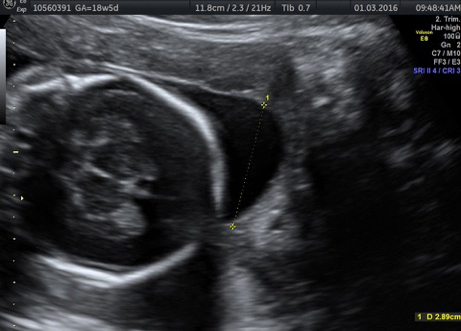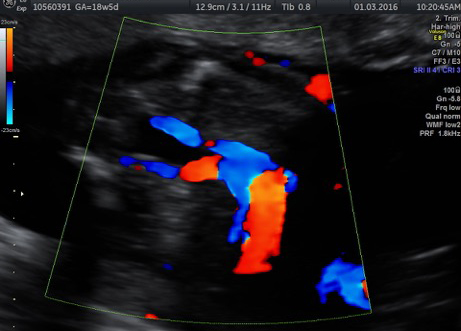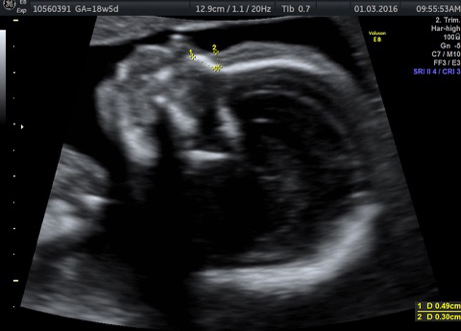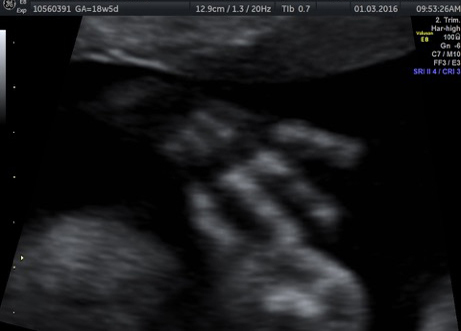Rarely, a mass may be found on the fetus’ neck. Most often this condition is due to problems called either lymphatic malformation or teratoma. In other circumstances, the mass may be a more rare abnormality (such as neuroblastoma, cervical thymic cyst, hemangioma or other lesion). A lymphatic malformation, formerly known as cystic hygroma, or lymphangioma, is a type of vascular malformation – an irregular grouping of blood vessels, lymphatic channels and veins that becomes a mass. There is no known cause for this condition, and it usually occurs without other associated conditions. Lymphatic malformations are not cancerous, though they may be hard to treat. A teratoma is an actual tumor. Teratomas are usually not cancerous, though small areas of cancer may be found in about 10-20 percent of fetuses with these conditions.
Fetal neck masses are usually detected by fetal ultrasound. However, we believe that a fetal MRI scan is very helpful in further characterizing this problem, as it helps us determine the exact type and location of the mass and how the mass may be affecting the fetus. If these masses become large or are located in a poor position, they may push on surrounding structures of the fetal neck such as the esophagus (swallowing tube) or trachea (airway). Fetal MRI is used to determine whether there is compression on these critical structures.
EXIT procedure stands for “ex-utero intrapartum treatment” and refers to a specialized delivery approach for your child. During the EXIT procedure, the baby will remain attached to the umbilical cord and placenta and receive adequate oxygen while steps are taken to ensure the baby will be able to breathe adequately following birth. Your treatment team will evaluate factors such as the size, location and characteristics of the mass, the amniotic fluid levels and the TEDI value to decide whether an EXIT procedure may be recommended.

























